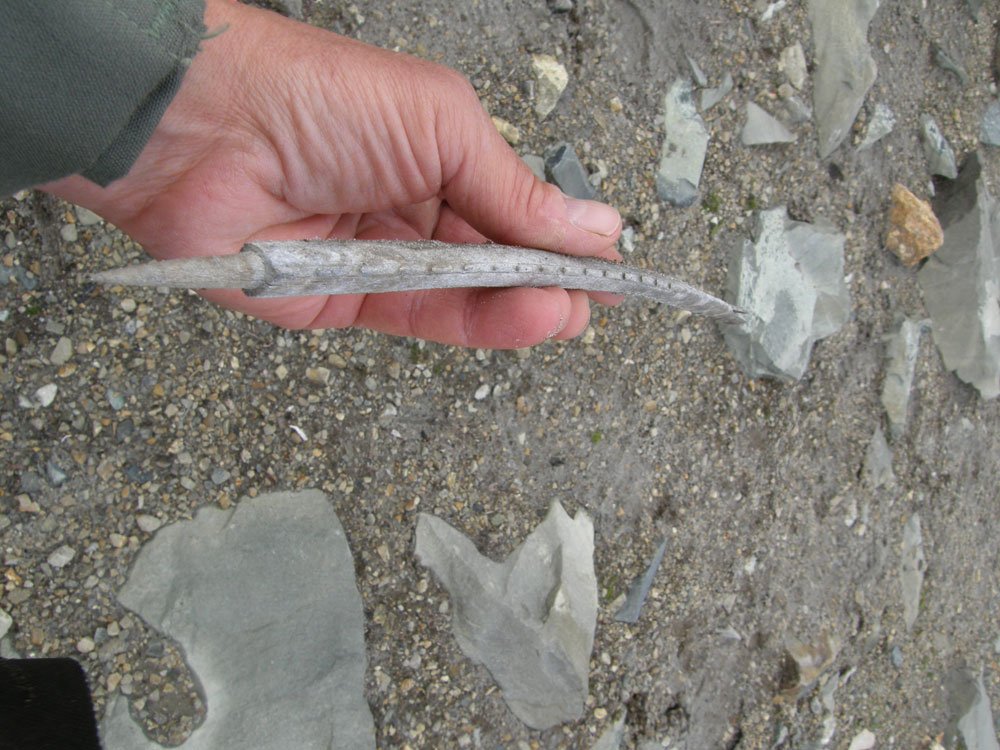Imagine a world where time stands still, where remnants of ancient ecosystems remain untouched by the passage of millennia. This world exists beneath the icy surface of Canada’s permafrost, an extraordinary natural archive preserving tales from prehistory. The permafrost acts like a time capsule, offering us glimpses into the past, revealing secrets of long-lost flora and fauna, and providing invaluable insights into our planet’s climatic history.
The Silent Guardians of History
Canadian permafrost extends over vast stretches of the North, acting as silent guardians of history. These frozen grounds cover nearly half of Canada’s land area, primarily in the territories of Yukon, Northwest Territories, and Nunavut. Permafrost is essentially ground that remains frozen for at least two consecutive years, but in many places, it has been frozen for millennia. This enduring cold preserves organic material, like plants and animals, as well as human artifacts, in remarkable detail. The permafrost’s ability to keep these materials intact offers a unique window into past climates and ecosystems, much like a library of natural history.
Unlocking Secrets of Ancient Life
Within the layers of permafrost lie the remnants of prehistoric life, offering a peek into a world that once was. Scientists have uncovered the remains of woolly mammoths, ancient bison, and even prehistoric horses, perfectly preserved down to their fur and stomach contents. These discoveries help us understand not only the species themselves but also the environments they inhabited. By studying the DNA and isotopic signatures in these remains, researchers can reconstruct past climates, migration patterns, and even dietary habits of these ancient creatures, enriching our understanding of Earth’s history.
Prehistoric Plant Life Revealed
It’s not just ancient animals that the permafrost safeguards. Seeds and plant material encased in ice offer clues about prehistoric plant life. Scientists have found seeds of ancient plants that, when thawed, show remarkable vitality, sometimes even sprouting anew. This phenomenon provides insights into the resilience and adaptability of plant species over time. By examining these botanical relics, researchers can piece together historical vegetation patterns, track the evolution of plant species, and comprehend how past climate changes influenced plant distribution.
Human Artifacts and Ancient Cultures

The Canadian permafrost also holds treasures of human history. Artifacts from early indigenous cultures, such as tools, clothing, and even remnants of shelters, have been discovered, offering a glimpse into the lives of those who once inhabited this frozen landscape. These findings not only provide information about the technological advancements of ancient cultures but also their adaptation strategies to harsh climates. As the permafrost thaws, it reveals a rich tapestry of human history, allowing us to appreciate the ingenuity and resilience of our ancestors.
A Record of Earth’s Climate

Permafrost is more than just a repository of ancient life; it is a crucial record of Earth’s climatic past. The ice cores extracted from permafrost layers contain trapped air bubbles that offer snapshots of atmospheric conditions over thousands of years. Analyzing these cores helps scientists understand historical climate variations and provides context for current and future climate change. By studying the greenhouse gases preserved in permafrost, researchers can gauge the natural cycles of warming and cooling, aiding in the prediction of future climate scenarios.
The Threat of Thawing Permafrost

As the global climate warms, the stability of permafrost is under threat. Thawing permafrost poses significant challenges, not only in terms of infrastructure and ecosystems but also in releasing carbon stored in frozen ground. As organic matter thaws and decomposes, it releases carbon dioxide and methane, potent greenhouse gases, into the atmosphere. This feedback loop accelerates climate change, creating a sense of urgency to understand and mitigate the impacts of permafrost thaw. Preserving this natural archive is crucial to maintaining the delicate balance of our planet’s climate system.
Scientific Endeavors in the Frozen North

Researchers from around the world are drawn to the Canadian permafrost, eager to explore its icy depths and uncover its secrets. Field expeditions, often challenging and remote, involve drilling into the frozen ground to extract cores and collect samples. These scientific endeavors are collaborative efforts involving geologists, biologists, and climatologists, among others. Through these interdisciplinary studies, scientists aim to unravel the complexities of permafrost dynamics and its implications for ecology, climate, and human history. Their work is vital in guiding policies and strategies for managing permafrost regions in a changing climate.
Permafrost as a Cultural and Natural Heritage
Beyond its scientific significance, permafrost holds cultural and natural heritage values for indigenous communities who have inhabited these regions for generations. The permafrost landscape is intertwined with cultural narratives, traditions, and knowledge systems. Indigenous peoples possess a deep understanding of the land and its changes, offering valuable insights into sustainable practices and adaptation strategies. Recognizing and respecting these connections is essential in fostering collaborative approaches to conservation and research, ensuring that both cultural and natural heritage is preserved for future generations.
Lessons From the Past for the Future

The Canadian permafrost serves as a poignant reminder of the intricate connections between climate, ecosystems, and human societies. It teaches us that understanding the past is vital in navigating the challenges of the present and future. By studying the frozen time capsules of the permafrost, we gain insights into the resilience of life, the impacts of climate change, and the importance of preserving our planet’s natural history. As we face unprecedented environmental changes, the lessons from the permafrost call us to action, urging us to protect and cherish the invaluable archives nestled within the frozen earth.
The Power of Preservation

In the grand tapestry of Earth’s history, the Canadian permafrost stands as a testament to the power of preservation. It safeguards the stories of ancient life, the whispers of climates long past, and the footprints of human endeavor. As we continue to delve into its depths, may we be inspired by the resilience of nature and the wonders of our planet’s past, fostering a profound appreciation for the delicate balance that sustains life on Earth.




